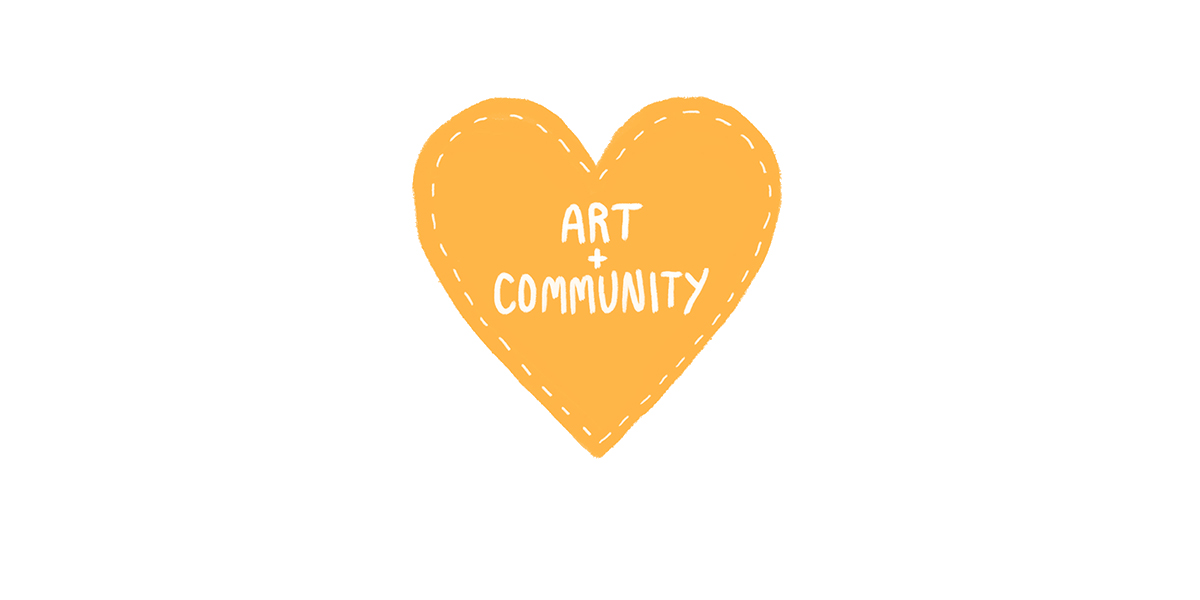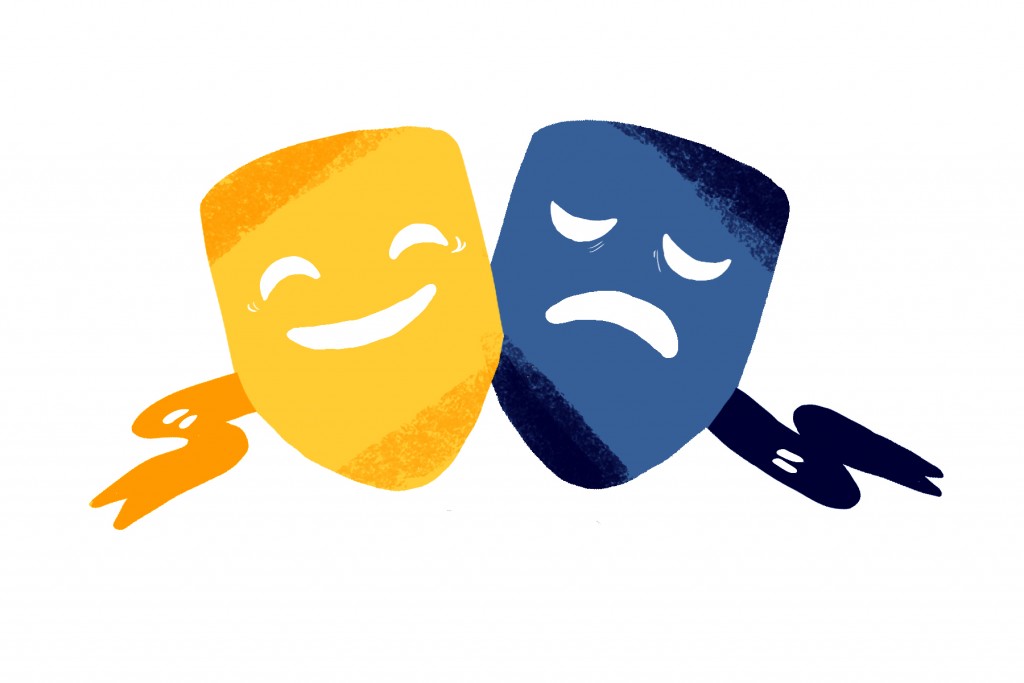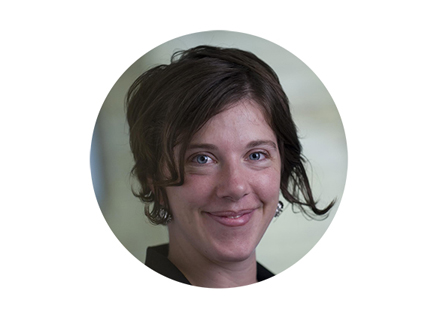
Words by Leslie Johnson // Illustrations by Leigh Luna
Growing up I wanted to be a dramaturg, which meant I wanted to articulate the context of a play for modern audiences. Dramaturgs have an important role during the process of writing a new play. They can assist a playwright in a similar way to how an editor works with an author on a manuscript. But the skills needed to research the context of a centuries-old play are different than the skills needed to shape a new work. However the former seemed much more in demand in the Twin Cities theater scene than the latter.
The formal arts scene in many cities is anchored by large institutions that present work from the Western artistic canon. This model is perpetuated by funding structures, and is often praised as a way to bring in tourists. However this strategy leaves other potential artists and participants out in the cold. They’re excluded due to lack of accessibility and disinterest because the work does not resonate with them culturally.
When I studied Shakespeare, Chekhov, and Ibsen in college, I thought I was learning about art with a capital “A.” These are timeless narratives I thought would resonate with everyone. I thought I could learn about myself through the lens of these plays.
Art defines and advances culture
This was the subtext of my studies, but there was no identification of whose culture was involved.
I am slowly understanding that refracting yourself through a very old piece of art has its place, but sometimes we need new narratives and work altogether. I can see that I live in a time of immense inequality that privileges a Western white point of view. But my perspective isn’t the only perspective. Art needs to speak to more people in order for it to resonate and stay relevant.
The well-off in our city, state, and country consistently and systematically participate in and support the “arts.” We know that they expose and engage their children in artistic expression and intellectual experiences, and where these opportunities do not exist, they go to extraordinary measures and cost to see that they do. They understand that art is essential to the human experience. To imagine that the urban poor can succeed without it is illogical and confounding.
—Tony Wagner, former President and CEO, Pillsbury United Communities
What does it mean to build community through the arts?
I set out to learn how to build community through the arts because it’s one way to bring diverse perspectives to art making. The goal could simply be to create and strengthen bonds between community members, or it could be to provide access to the arts for people who haven’t traditionally enjoyed such access. The arts are a way to engage people in their community, and the arts can make those communities more livable, too.
What might community-centered art making look like, and what are some best practices to build community through the arts? Here are some thoughts:
Twin Cities Local Initiatives Support Corporation
Erik asks: What will it take to make both people and places prosper? When only people prosper, the result is migration. When only places prosper, there is displacement. When people and places prosper together, there is true development. Erik sees art as a socially engaged practice. What if the artistic focus was on the experience rather than the product? His best practices include being intentional about the change you’re seeking, which allows you to truly measure whether or not you accomplished your goal.
Metropolitan Regional Arts Council
Shannon is a champion of diversity, equity, and inclusion in the arts. The art making process is especially important for Shannon and her organization when it comes to grantmaking. Whose voices are in the room and are they being heard? Partnerships can help support art ideas that bubble up from within a community, rather than imposing outside ideas on a community. Authenticity is an important factor in community building through the arts. Shannon also understands that not all arts initiatives are meant to last forever; sometimes an ephemeral or event-based project has the most impact.
Rip spoke to a conference of the League of Historic American Theatres in Minneapolis in July 2013. His message outlined four tenants of community building through the arts: place, community engagement, embrace of community development systems, and outward orientation. Of these, I think the latter has particular significance. Outward orientation means focusing beyond the insular work of an organization’s usual artistic sphere, and actively searching for creative inspiration in the community.
If you want to build a ship, don’t drum up people together to collect wood and don’t assign them tasks and work, but rather teach them to long for the endless immensity of the sea.
—Antoine de Saint-Exupery
By studying community building through the arts, I have learned that the arts aren’t a monolithic entity. Art encompasses much more than the large, formal institutions we know. It already exists in our neighborhoods; we just need to recognize it and foster it.
We need art that speaks to a new multicultural and connected generation of socially engaged artists and art participants. Shakespeare, Chekhov, and Ibsen wrote in response to their times; we must create art that responds to our own times. There is a sociological dimension to all artistic endeavors — nothing exists or was created in a vacuum. As Holly Sidford says in her work for the National Committee for Responsive Philanthropy, relevance and local context must be elements in assessing the quality of a work of art in modern society.
Context brings us back to dramaturgy. While we need to bring context to our art, we also need an editor who can help shape and expand narrative. We all benefit when our art tells more than one story.
Want to learn more? Here are some resources to dig deeper into the subject:
1. Borwick, D. (2012). Building communities, not audiences: The future of the arts in the United States. Winston-Salem, NC: ArtsEngaged.
A theory to practice guide with numerous examples, strategies, and reasons to embrace community building through the arts. It includes an excellent piece by Noel Raymond and Denise Kulawik about Pillsbury House Theatre.
2. EmcArts. (2013). EmcArts mission and foundational ideas.
An introduction to EmcArts, an organization that specializes in increasing the adaptive capacity of arts organizations in times of change.
3. Gadwa Nicodemus, A. (2013). Fuzzy vibrancy: Creative placemaking as ascendant US cultural policy.
Anne Gadwa Nicodemus was one of the first researchers to coin the term, “creative placemaking.” Creative placemaking is a particular kind of community building through the arts that focuses on place and collaborations with non-arts organizations.
4. Rapson, R. (2013, July 17). Creative placemaking: Rethinking the role of arts and culture in strengthening communities.
The CEO of the Kresge Foundation, an innovative funder in community building through the arts, talks about what makes the arts so vital today. He uses many examples from the Twin Cities.
5. Sidford, H. (2011). Fusing arts, culture and social change: High impact strategies for philanthropy.
A terrific article about how funders can support community building through the arts. Holly Sidford focuses on demographic, aesthetic, and economic trends that call for change.






